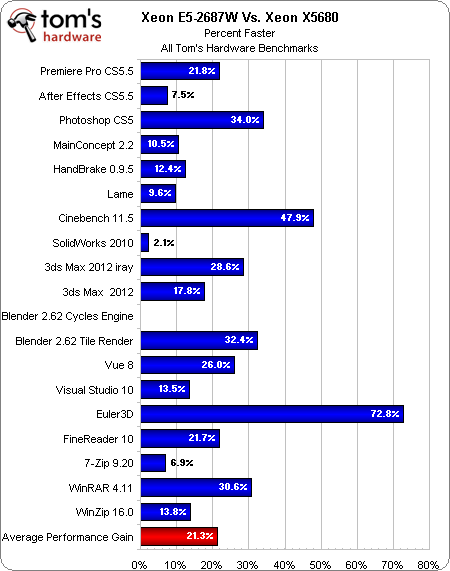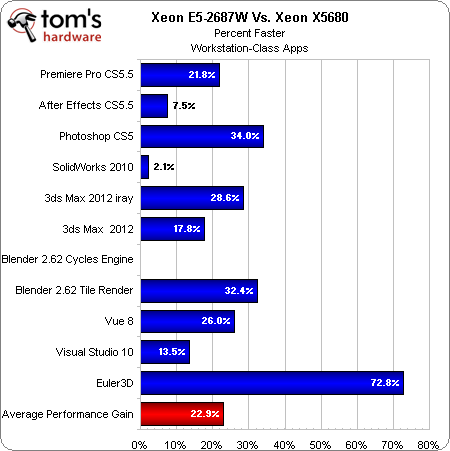Intel Xeon E5-2600: Doing Damage With Two Eight-Core CPUs
Intel's vaunted Sandy Bridge architecture has finally made its way to the company's dual- and quad-socket-capable Xeon processors. We got our hands on a pair of eight-core Xeon E5-2687W CPUs to compare against the older Xeon 5600- and 5500-series chips.
Percent Faster: Xeon E5s Vs. Xeon 5600s
When we compile the results from all of our tests and compare two Xeon E5-2687Ws to two Xeon X5680s, we see that the E5s are, on average about 21% faster.
Some of those tests aren’t good representations of what a professional would do on a workstation, though. Lame is in there explicitly to show the difference between these CPUs with a single core active, for example. The compression tests are pretty lightweight, and the transcoding tests don’t really necessitate a dual-processor machine. So, let’s take all of that out and see where we end up:
Now we’re closer to a 23% improvement. Euler3D skews the E5’s advantage quite a bit, but so do curiously-low numbers from Blender’s new cycles rendering engine and the SolidWorks 2010 render.
Regardless, more than 20% is significant for money-making applications.
Get Tom's Hardware's best news and in-depth reviews, straight to your inbox.
Current page: Percent Faster: Xeon E5s Vs. Xeon 5600s
Prev Page Benchmark Results: Productivity Next Page Power Consumption And Efficiency

